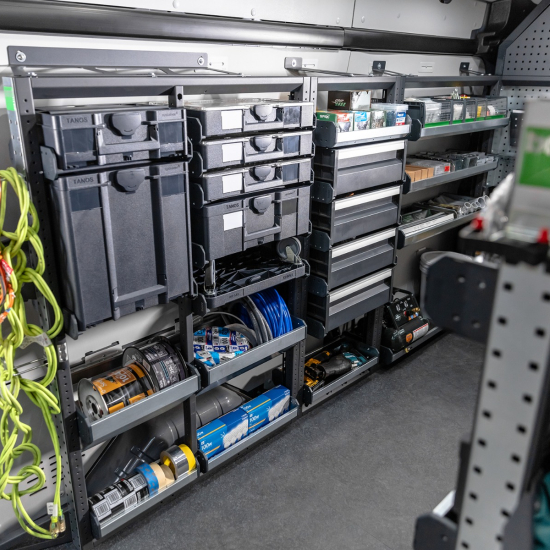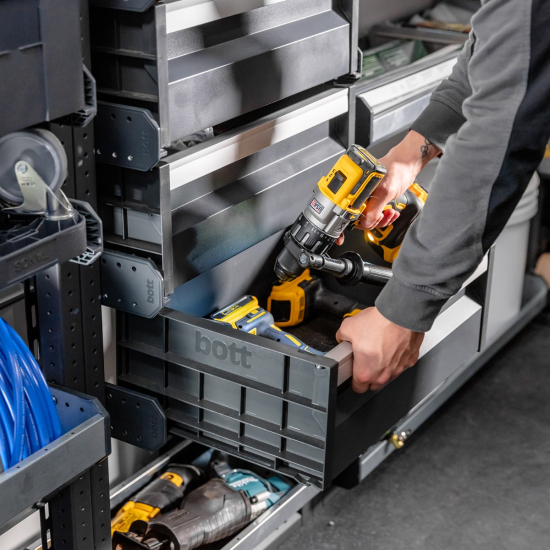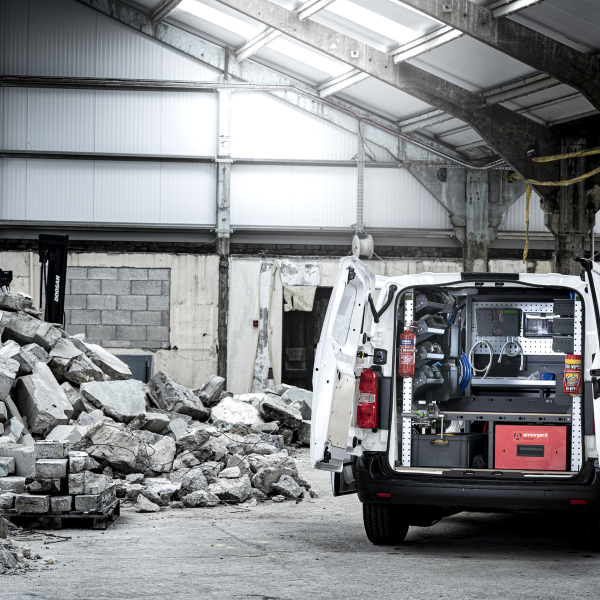10 Things To Look For When Buying A New Van
Time to buy a new van? It's an exciting time, but how do you pick the right one for you? With so many options on the market - from size and shape, to fuel efficiency and EV models, it's crucial that you can identify the vehicle that best suits your requirements.
So whether you're a business owner looking to expand your fleet, or a tradesperson seeking the perfect van for your professional endeavours, read on for our comprehensive guide to all things new vans!
1. Van Size
First, consider the size of your brand new van. There are four main van size categories: Micro Vans, Small Vans, Medium Vans and Large Vans.
- Micro vans, such as the Ford Transit Courier, are characterised by their compact size, often smaller than traditional passenger cars, and have limited cargo capacity. A micro van is typically used for deliveries in crowded city areas, as they are easy to manoeuvre and park.
- A small van is better suited for a tradesperson looking for a compact, yet slightly bigger vehicle (such as the Citroen Berlingo). Typically used by plumbers, electricians and carpenters, you will most likely use a small van to carry tools, equipment, and materials to job sites.
- Medium vans have a higher cargo capacity than small vans and can carry more goods or passengers. They are often used for medium-sized commercial operations, such as delivery services, trades, or shuttle services. A new Ford Transit Custom is a popular medium van choice.
- Large vans provide maximum capacity, making them ideal for carrying substantial loads. The largest vans, such as the Mercedes-Benz Sprinter, are commonly used for commercial purposes that involve transporting large or bulky items, such as freight delivery.
Start here when compiling your shortlist. Figure out your van’s interior size requirements based on what cargo you'll be transporting, and remember to factor in floor space. You may want to use the back of your van as a workspace on-site.
2. Van Length & Height
You may consider purchasing a long-wheelbase van if you’re transporting extra-long cargo. Long-wheelbase van length differs from vehicle-to-vehicle but will be considerably longer than your standard van and offer increased space and payload capacity.
Vans typically offer three height variations: H1, H2, and H3. An H1 represents a standard roof height, while an H2 offers a taller roof height. H3 signifies the tallest roof available. While the extra height in H2 and H3 models can be great for increased cargo capacity and comfort, these vans may face challenges when it comes to navigating places like car parks. As you explore your options, factor in both your need for van interior space and the practicalities of fitting into various environments.
3. How Many Doors?
There are a few van rear door types to consider when buying a new van. The most common are two rear doors that open to approximately 90 degrees. This configuration is a common choice for many trades. The 90-degree angle allows for relatively easy access to the cargo area, and it's suitable for most loading and unloading situations.
A sliding door is especially useful too when you need to load or unload items in tight spaces or alongside a curb. It provides quick access to the cargo area without having to open the rear doors. You might want to explore the option of a double sliding door for even more efficient loading and unloading.
Some new van models offer rear doors that can open 270 degrees. This configuration makes it incredibly convenient to access, load and unload large items or pallets with a forklift. It also allows for easier loading in confined spaces.


4. Seating
Are you interested in finding a small van with 3 - 5 seats? If your job often requires you to transport three or more crew members, it's important to keep in mind that these additional seats will reduce the available cargo space. You may also compromise on comfort if a load bulkhead is fitted behind the front seats, reducing your ability to recline.
5. Electric Vans
Electric vans produce no tailpipe emissions, reducing air pollution and greenhouse gas emissions. They also provide instant torque, leading to quick acceleration and improved performance, especially in stop-and-go city traffic.
Although, Electric vans typically have a limited driving range compared to petrol or diesel vans, they have a much lower fuel and maintenance cost compared with their less eco-friendly counterparts.
You can find out more about electric vans and explore custom van racking for your EV here.


6. Diesel Vans
One of the best fuel economy vans you will find on the market. Diesel vans offer established options with newer 6D engines for a quieter ride and excellent fuel economy. Additionally, they provide the largest payloads among van options.
Despite their advantages, diesel vans are less environmentally friendly due to high CO2 levels and particulate emissions. Diesel prices have increased substantially over the last year with no sign of decreasing any time soon. Some diesel vans may also incur fees in ultra-low emission zones.
7. Alternative Fuels
When buying a new van, you may wish to invest in an alternative fuel option. LPG and CNG vehicles are becoming increasingly popular for those not ready to make the switch to an EV. Vans with gas power conversions are typically offered as retrofits through authorised fitters, opening up a world of sustainability benefits for van users.
8. Speed Limiters
Speed limiters prevent vans from exceeding 70mph. They can be an option when buying a new van or retrofitted to used vans. While they can’t prevent other forms of driving offences, fleet operators can at least stem the flow of speeding tickets. Likewise, it’s possible to specify new vans such as the Ford Transit with a rev limiter and ‘acceleration control.
9. Van Warranties
When evaluating van warranties, look for coverage duration, mileage limits, included services, and any exclusions or limitations. Van warranties may vary between 3 years/60,000 miles and up to 10 years/100,000 miles and should be factored into your purchase decision.
10. Van Racking
If you’re planning to install racking into your new purchase, we recommend checking out our custom van racking solutions. Try out our configurator to create an easy-to-fit, no-drill van racking system - available for your chosen van. With an average assembly time of 1.5 hours per rack, you’ll have your van interior fitted and organised in no time.
We hope the guide above has helped you to navigate the tricky task of selecting and buying a new van. We’ve covered everything from van sizes and seating arrangements to doors and fuel efficiency. Remember to consider speed limiters, warranties, and robust van racking to ensure your van suits your needs and exceeds your expectations. Plus, if you're looking to customise your van with racking, we've got you covered.
Ready to master space and time?
Design your ideal mobile workspace with our easy-to-use online configurator. Tailored to your van, built for your trade. Select your vehicle & start configuring




